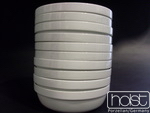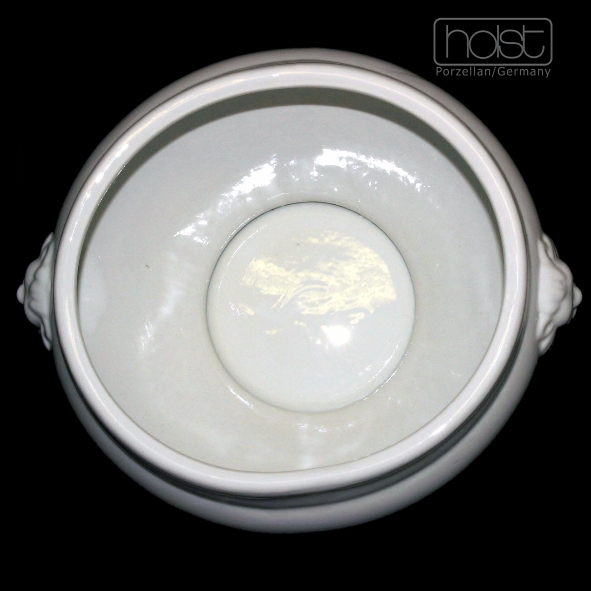Deformations

Deformations of the porcelain body
Deformations (nearly non visible)
The slight (barely visible) deformation of the upper, round openings (e.g. bowls and cups) is a natural, production-related characteristic of porcelain which has not been fired on the rim (upper rim of the cup) (see above unglazed rims). Due to the shape and the moisture-containing mass, which loses between 13 and 18 % of its volume during the firing process (shrinkage process), the deformation of porcelain can definitely not be excluded.
A mathematical "round" cannot be found in any porcelain article! It is up to the subjective observer when the deformation has a disturbing effect on an article. Deformations can only be recognised as a defect if the article loses its optical appearance (picture below) or its function (usually its stackability) due to deformation.
Deformations (highly visible)
Clear case: second choice! Factors outside the normal manufacturing tolerances have occurred during the processing, such as, in the example on the left, an improper removal of the lion head tureen from the mould. In the ongoing manufacturing process of porcelain there are unfortunately a number of sources of deformation, most of which are due to human error.
Deformations in special stackable items

Deformations have a particularly unattractive effect on functional items (calipered porcelain) e.g. hospital items when shrinkage affects the functionality (stackability) of the porcelain. Just a few millimetres are enough to rob a stackable funcionaly item of its intended function and make the porcelain unusable. This is one of the reasons why hospital porcelain must be "taught". Important: As a system bowl for hospital porcelain, the bowl (picture) is definitely the second choice, since stackability and accuracy are the most important factors here. As a "cheap soup bowl" at a public festival, price and performance would be in an acceptable ratio!

